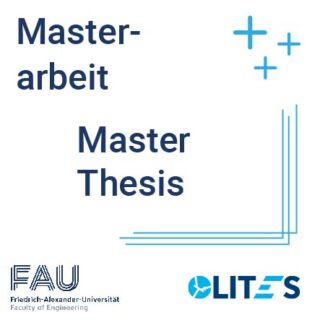MA: Detection of conscious disturbances of an RF communication link using Neural Networks
Description
Jamming of wireless data transmission is considered a form of Denial of Service (DoS) attack and poses a threat to modern communication systems. In order to initiate suitable countermeasures against a jamming attacks at an early stage and thus protect the communication system, it is important to recognize the power with which a jammer interferes with wireless communication and the type of signal used for the interference.
The use of AI algorithms, e.g. neural networks, promises a better classification of the interference power and better recognition of the signal form used by the jammer compared to classic detection metrics such as Bit Error Rate (BER) or Received Signal Strength (RSS).
In order to integrate recognition into a receiving system as early as possible, the processing of time series of received IQ data is to be investigated. Using an existing data set, a subdivision into training and test data as well as suitable labeling will be carried out. Models for Fully Connected Neural Networks (FCNNs) and Convolutional Neural Networks (CNNs) will then be created and optimized for the time series from the data set. Finally, a statement on the ability of jammer classification will be made by training and testing the neural networks.
Research Questions
- How and with what accuracy can the power and waveform of a jammer be classified based on time series of received IQ data?
- What must the time series of the IQ data look like in order to be adequately processed by the neural network used?
- What are suitable models for neural networks to perform this classification quickly and accurately?
Research Goals
The aim is to develop a suitable AI framework for processing time series of IQ data with suitable preprocessing of the available data set. The performance of a neural network is to be optimized with regard to jamming detection and classification.
Topics
The description and the research questions can lead to the following sub-projects:
- Literature research on existing jamming detection methods and use of neural networks ‘on the edge’ in communication systems.
- Preprocessing of the data set to generate a suitable size and scaling of the input data for processing with a neural network.
- Creation and optimization of a neural network model for the detection and differentiation of various jamming scenarios.
- Outlook on the model size with regard to an implementation in a µC or FPGA.
Optionally possible:
- Extension of the data set with self-generated data using a Software Defined Radio (SDR).
- Implementation of a neural network on a HW platform (µC or FPGA).
You are also welcome to discuss and contribute your own interests.
Skills
- Fundamentals of information and communication technology
- Fundamentals of Deep Learning und Neural Networks
- Experience with AI/machine learning and working with tools such as Keras or TensorFlow
- Confident handling of Python
- Knowledge of working with software defined radios (SDRs) is an advantage
References
- Saeif Alhazbi, Savio Sciancalepore, Gabriele Oligeri, “A Dataset of physical-layer measurements in indoor wireless jamming scenarios”, Data in Brief, Volume 46, 2023, 108773, ISSN 2352-3409, doi: 10.1016/j.dib.2022.108773
- Alhazbi, S. Sciancalepore and G. Oligeri, “BloodHound: Early Detection and Identification of Jamming at the PHY-layer,” 2023 IEEE 20th Consumer Communications & Networking Conference (CCNC), Las Vegas, NV, USA, 2023, pp. 1033-1041, doi: 10.1109/CCNC51644.2023.10059878
- Lohan, B. Kantarci, M. Amine Ferrag, N. Tihanyi and Y. Shi, “From 5G to 6G Networks: A Survey on AI-Based Jamming and Interference Detection and Mitigation,” in IEEE Open Journal of the Communications Society, vol. 5, pp. 3920-3974, 2024, doi: 10.1109/OJCOMS.2024.3416808
If you are interested in this exciting research work, we look forward to receiving your application with a short resume at

